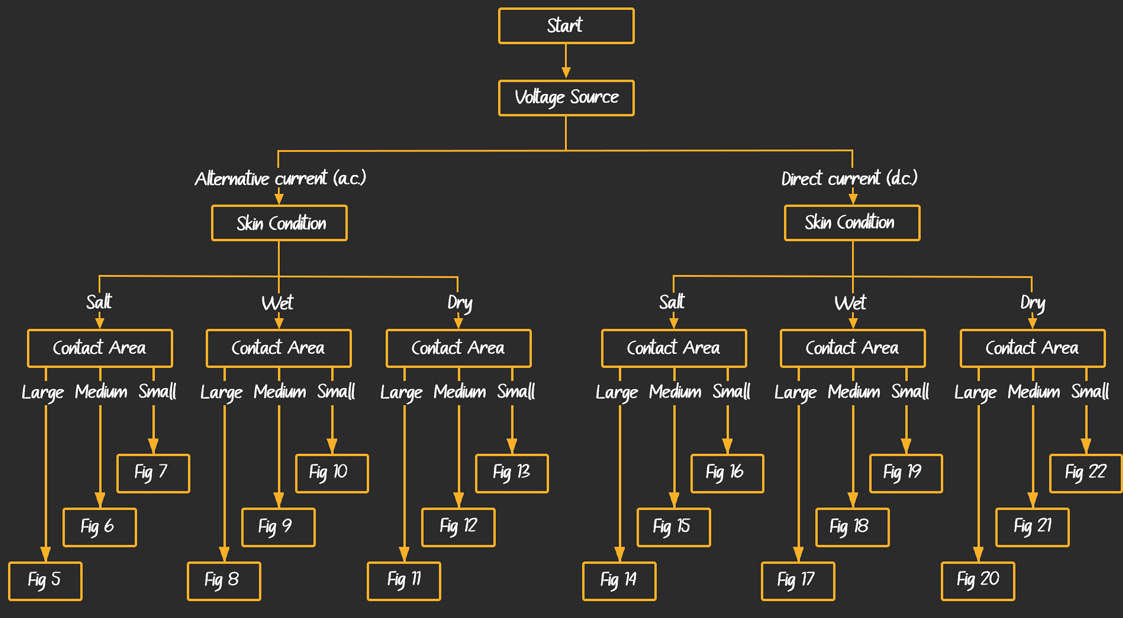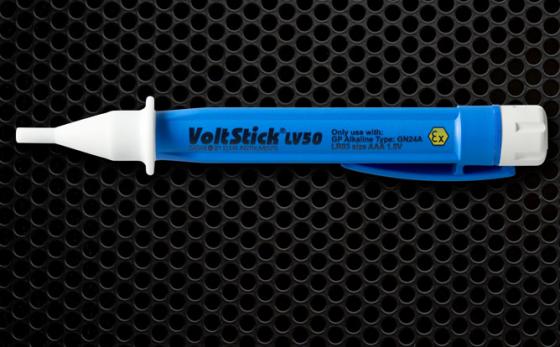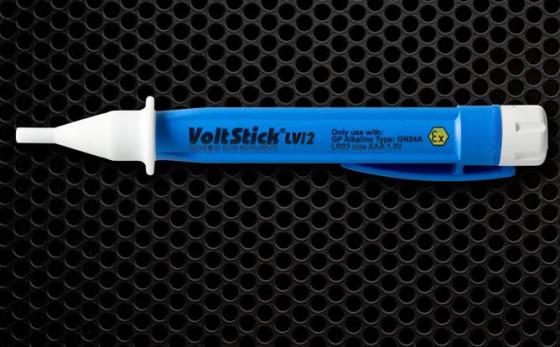How does the HSE calculate it’s Touch Potential Safety Threshold?
The Heath and Safety Executive (HSE) sets out the Electricity at Work Regulations and gives technical and legal guidance on them. But how do they calculate the touch potential safety threshold? Volt Stick explains more...
Who sets Voltage Safety Thresholds in the UK?
The Electricity at Work Regulations 1989 came into force on 1 April 1990 and requires precautions to be taken against the risk of death or personal injury from electricity during work activities.

The Heath and Safety Executive (HSE) - is a UK Government agency that is responsible for the encouragement, regulation and enforcement of workplace health, safety and welfare and for the research into occupational risks in the UK.
The HSE’s book “The Electricity at Work Regulations 1989” (HSR25) sets out the Electricity at Work Regulations and gives technical and legal guidance on them. Following the guidance is not compulsory, unless specifically stated, but if the guidance is followed then you would normally be doing enough to comply with the law.
(HSR25 page 10) Guidance 2 – Electric Shock - Is a section that recognises the various effects of Electric Shock on the body and states that their nature and severity depend upon the magnitude, duration and path of current through the body. It goes on to say that it is not possible to identify precise thresholds of a hazard because a judgement has to be made in each case taking into consideration other factors such as body weight and conditions etc. For more detail of the Electrical Current levels that mark the occurrence of various dangerous effects it refers to the International Electrotechnical Commission’s (IEC) publication “Guide to effects of current on human beings and livestock” (IEC TS 60479).
The HSE’s book “Electricity at Work- Safe Working Practices” (HSG85) is guidance that covers key elements to consider when devising safe working practices and is for people working on or near electrical equipment. On Page 5 it states ‘an object is hazardous if the voltage exceeds 50Vac in dry conditions’, and refers to BSI publication PD6519 which is actually also a copy of the “Guide to effects of current on human beings and livestock” (IEC TS 60479).
Why is the UK’s Safety Threshold set at 50v?
Both HSG85 and HSR25 above, refer to the IEC 60479 publication “Guide to effects of current on human beings and livestock” and this is where we need to look to understand why the UK’s Safety Threshold is set at 50Vac.
IEC (International Electrotechnical Commission) is an international standards organisation that prepares and publishes International Standards for all electronic and related technologies (Electrotechnical). The IEC was founded in 1906 with representatives from Austria, Belgium, Canada, Denmark, France, Germany, Great Britain, Holland, Hungary, Japan, Norway, Spain, Sweden, Switzerland, and the United States. The aim of the IEC is to develop and distribute standards and units of measurement so as to unify terminology relating to electrical, electronic and related technologies. Today the organisation is based in Geneva with over 160 Member Countries that use their standards.
IEC/TS 60479-1 – “Effects of Current on human beings and livestock” – Part1 General Aspects
This document details information gathered from clinical observations and experiments with shock currents that were carried out on animals and human beings. It shows how values were calculated for Body Impedance and various Current Thresholds for different physiological responses using a variety of paths and durations of current through the body.
IEC 60479-5 – Touch Voltage Threshold Values for Physiological Effects – Part 5
Is a report referred to by the HSE that provides a methodology to estimate touch voltage / duration combination thresholds based on the analysis of information concerning body impedances and current thresholds of physiological effects that were reported in IEC/TS 60479-1. The objective of the report being to derive touch voltage threshold values corresponding to zones of physiological effects.
IEC 60479-5 – Page 12 (Fig 1) The report identifies 3 zones/thresholds of physiological effects that are of the greatest interest and marks them as curves a, b and c1
Curve a – risk of startle reaction – is the level beyond which startle reaction of current becomes possible.
Curve b – risk of muscular reactions – is the lower boundary of current levels beyond which more serious and undesirable physiological effects begin to occur.
Curve c1 – risk of ventricular fibrillation – is the level beyond which the likelihood of ventricular fibrillation becomes to be a concern.

IEC 60479-5 – Page 17 - The following flow-chart is provided to direct the reader to the appropriate figure showing the voltage threshold information based on the situation of interest.

If we remember, the HSE states 50Vac in Dry Conditions as their Touch Potential Safety Threshold, so if we look at the flow chart above then this would direct us to Fig 11, Fig12 or Fig 13 depending on the size of the contact area that the HSE were anticipating.
The IEC Report defines the following contact areas:
Large Contact Area – 82 cm² - large part of the body
Medium Contact Area – 12 cm² = might represent touching a conductive part in the palm of each hand
Small Contact Area – 1 cm² = might represent touching a small conductive part with the hand
The following charts are Fig11, Fig12 & Fig13 as referred to in the above flow chart. Each chart plots Voltage against Time and the resulting Physiological Responses...

We can see that a Large contact area of 82cm² requires a Safety Threshold of 30Vac to protect against the risk of Ventricular Fibrillation, even at long durations we can see that 30Vac would not cross the Ventricular Fibrillation line. A voltage level of 50Vac would require a contact time of around 0.7 seconds for the risk of Ventricular Fibrillation to become a concern.

A Medium Contact Area of 12cm² requires a Safety Threshold of 60v to protect against the risk of ventricular fibrillation; it can also be seen from this chart that even with a contact time of 10 seconds 60Vac would not cause a risk of Ventricular Fibrillation, so in dry conditions and with a Medium Contact area 50Vac would be safe from a risk of Ventricular Fibrillation.

A Small Contact Area of 1cm² requires a Safety Threshold of 90v to protect against the risk of ventricular fibrillation. We can see that 50Vac with a small contact area in dry conditions would also be safe from the ‘risk of muscular reaction’ Threshold.
Looking at Fig 11,12 & 13 we can see that the UK’s 50Vac Safety Threshold would protect against the likelihood of Ventricular Fibrillation in dry conditions with a Small and Medium contact area and up to 0.7 seconds with a large contact area.
The HSE also suggests that not only the above be taken into consideration when determining safety limits, but also a risk assessment should be made that includes the reduction of the likelihood of contact by the use of obstacles, barriers and warnings, the reduction of touch voltage by using bonding etc., and additional resistance provided by protective clothing such as gloves and shoes.
Read More...








